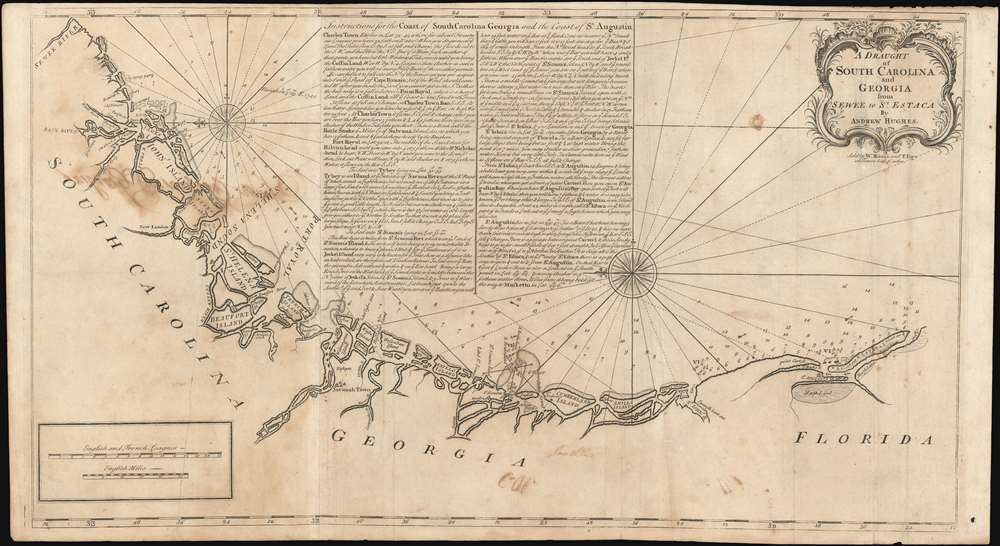This item has been sold, but you can get on the Waitlist to be notified if another example becomes available, or purchase a digital scan.
1778 Andrew Hughes Map of the Georgia, South Carolina, and Florida
SouthCarolinaGeorge2-hughes-1778
Title
1778 (undated) 18 x 32.75 in (45.72 x 83.185 cm) 1 : 450000
Description
Publication History and Census
The chart is credited to Andrew Hughes, of whom we have been able to learn little. It first appeared in the 1778 edition of Mount and Page's English Pilot, the Fourth Book, replacing A Large Draught of South Carolina. It represents a significant step forward in the cartography of this coastal region both in terms of greater accuracy and expanded coverage. Despite this, the map appeared in only a few Revolutionary War Era editions of the English Pilot and is subsequently extremely scarce.Cartographer
Mount and Page (fl. 1701 - 1760) was a London based firm of religious and maritime publishers that flourished in the 18th century. With the publication of the 1732 English Pilot, the Mount and Page name became well-known worldwide as an imprint of nautical charts. The firm was founded at Tower Hill, London, in 1701 by Richard Mount (1654 - 1722) and his apprentice Thomas Page (1780 - March 15, 1733). Mount had previously been in partnership with his father-in-law William Fisher (1631 - 1691) and inherited the business on the latter's death. Page completed his apprenticeship in 1716. Now fully partnered, Mount and Page subsequently acquired the map plates several defunct British nautical chart publishers, including Greenville Collins, Jeremiah Seller, Charles Price, and John and Samuel Thornton - thus nearly monopolizing the British nautical chart business. The firm consequently received several lucrative government contracts and thereby flourished throughout the 18th century, making the fortunes of both families. Successive generations of Mounts and Pages worked in the business, and the families intermarried. Its staple titles were The English Pilot and Navigatio Britannica by John Barrow. By the 1760s, Richard Mount's grandson John Mount (1725 - 1786) was able to retire to Berkshire where he built the stately mansion, Wasing Place. John's son William (1753 - 1815) was the last to work in the map business, and later generations went into politics. More by this mapmaker...

